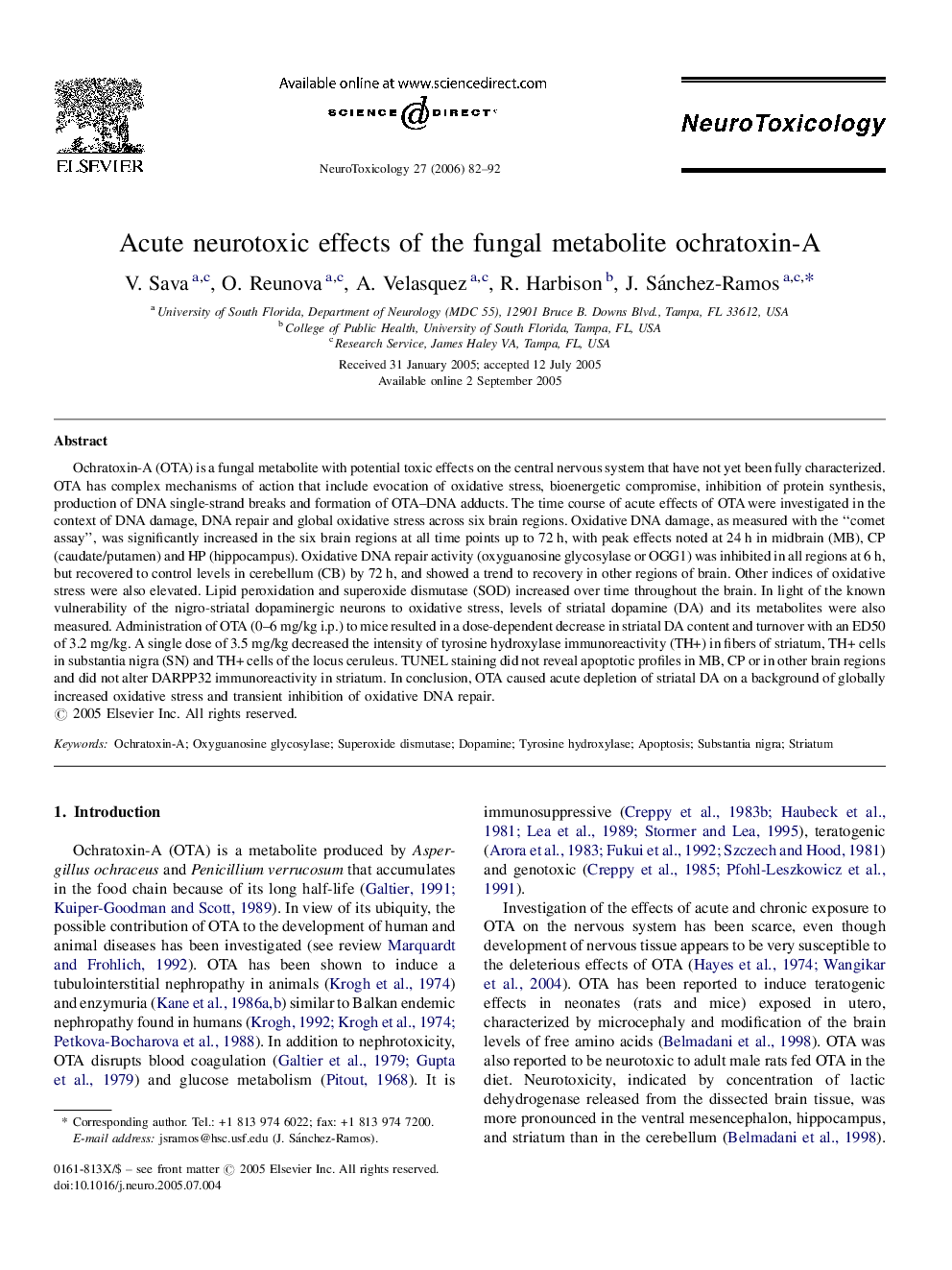| Article ID | Journal | Published Year | Pages | File Type |
|---|---|---|---|---|
| 2590788 | NeuroToxicology | 2006 | 11 Pages |
Ochratoxin-A (OTA) is a fungal metabolite with potential toxic effects on the central nervous system that have not yet been fully characterized. OTA has complex mechanisms of action that include evocation of oxidative stress, bioenergetic compromise, inhibition of protein synthesis, production of DNA single-strand breaks and formation of OTA–DNA adducts. The time course of acute effects of OTA were investigated in the context of DNA damage, DNA repair and global oxidative stress across six brain regions. Oxidative DNA damage, as measured with the “comet assay”, was significantly increased in the six brain regions at all time points up to 72 h, with peak effects noted at 24 h in midbrain (MB), CP (caudate/putamen) and HP (hippocampus). Oxidative DNA repair activity (oxyguanosine glycosylase or OGG1) was inhibited in all regions at 6 h, but recovered to control levels in cerebellum (CB) by 72 h, and showed a trend to recovery in other regions of brain. Other indices of oxidative stress were also elevated. Lipid peroxidation and superoxide dismutase (SOD) increased over time throughout the brain. In light of the known vulnerability of the nigro-striatal dopaminergic neurons to oxidative stress, levels of striatal dopamine (DA) and its metabolites were also measured. Administration of OTA (0–6 mg/kg i.p.) to mice resulted in a dose-dependent decrease in striatal DA content and turnover with an ED50 of 3.2 mg/kg. A single dose of 3.5 mg/kg decreased the intensity of tyrosine hydroxylase immunoreactivity (TH+) in fibers of striatum, TH+ cells in substantia nigra (SN) and TH+ cells of the locus ceruleus. TUNEL staining did not reveal apoptotic profiles in MB, CP or in other brain regions and did not alter DARPP32 immunoreactivity in striatum. In conclusion, OTA caused acute depletion of striatal DA on a background of globally increased oxidative stress and transient inhibition of oxidative DNA repair.
